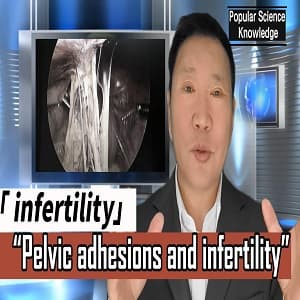Many patients who have been unable to conceive after marriage discover, upon inquiring about their medical history, that they had undergone appendicitis surgery, ectopic pregnancy surgery, or had conditions such as intestinal obstruction or cholecystitis in their abdomen during their youth. However, since their abdominal surgery, they have been unsuccessful in achieving pregnancy. Although there may not be evident symptoms or signs, we highly suspect that this is due to pelvic adhesions.
视频链接:https://pan.baidu.com/s/1ajZkADC6SzXVEvF3olxxXA 提取码:tqpf
To diagnose pelvic adhesions, the first step is to perform dynamic digital uterine tubal iodine oil imaging, which examines the position of the fallopian tubes, ovaries, and uterus to determine if there is any blockage or deformity. However, this is only a preliminary estimation, and the definitive diagnosis requires laparoscopic surgery.
Laparoscopic surgery is a method that accurately identifies the location and severity of pelvic adhesions. The degree of adhesions may vary, with some being filmy adhesions that can be easily separated with a gentle touch, while others may involve connective tissue adhesions that require scissors for dissection. There are also muscular adhesions that necessitate the use of an ultrasonic scalpel for separation. The reason behind infertility caused by adhesions is easily comprehensible—it is primarily due to mechanical factors. For instance, adhesions may lead to blocked fallopian tubes, preventing pregnancy; adhesions may impede the pickup of eggs by the fallopian tubes, resulting in infertility. Moreover, if the uterus is adhered to the pelvic wall and positioned abnormally, it can hinder the transport and implantation of fertilized eggs, further affecting the ability to conceive.
Therefore, infertility caused by pelvic adhesions is primarily attributed to mechanical factors. The treatment involves using a 3D laparoscope to release the adhesions and restore the positioning of organs and tissues to their original state. It is important to note that without effective anti-adhesion measures, new adhesions may form after surgery, and these new adhesions can be more severe and difficult to treat. Hence, implementing effective anti-adhesion measures is crucial.
Currently, the best anti-adhesion measure is the use of a biobarrier film. After separating the adhesions, the biobarrier film is applied to the surgical site, and it will be absorbed automatically in approximately seven days without the need for removal. Similar to plastic wrap that prevents dough from sticking together, the biobarrier film acts as a barrier against tissue adhesions and dissolves on its own.
Beijing Antai Hospital adopts a contracted treatment model. This model provides patients with comprehensive medical services, including preoperative examinations, surgical treatment, and postoperative recovery. Contracted treatment ensures that patients receive personalized treatment plans and are accompanied by a professional medical team throughout the entire process, offering the highest quality of medical care.
If you or someone you know is facing infertility issues suspected to be caused by pelvic adhesions, it is advisable to seek medical attention promptly and choose an experienced hospital for diagnosis and treatment. Early detection and treatment of pelvic adhesions contribute to increased chances and success rates of pregnancy.
 安太医院
安太医院







您好!请登录